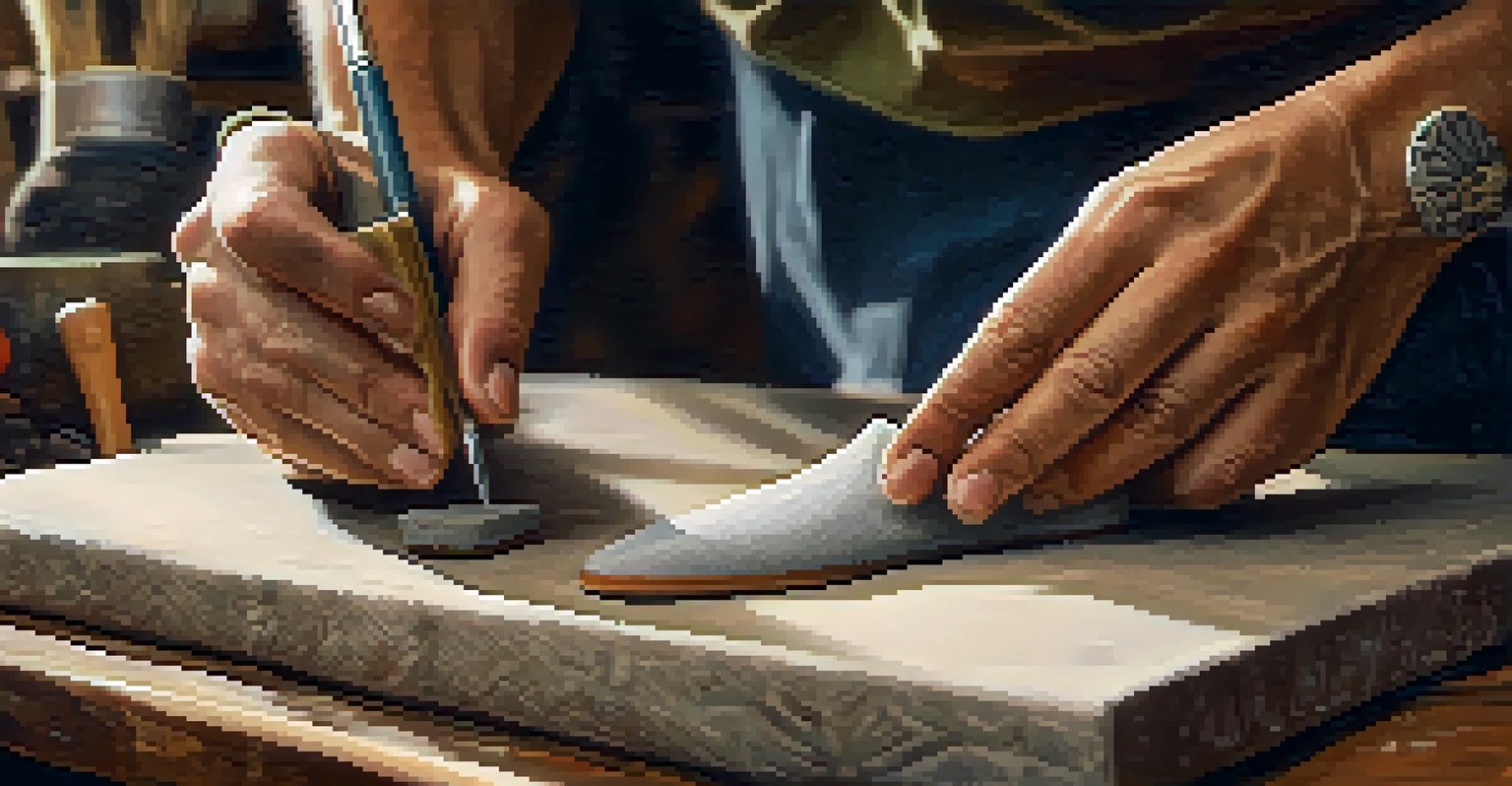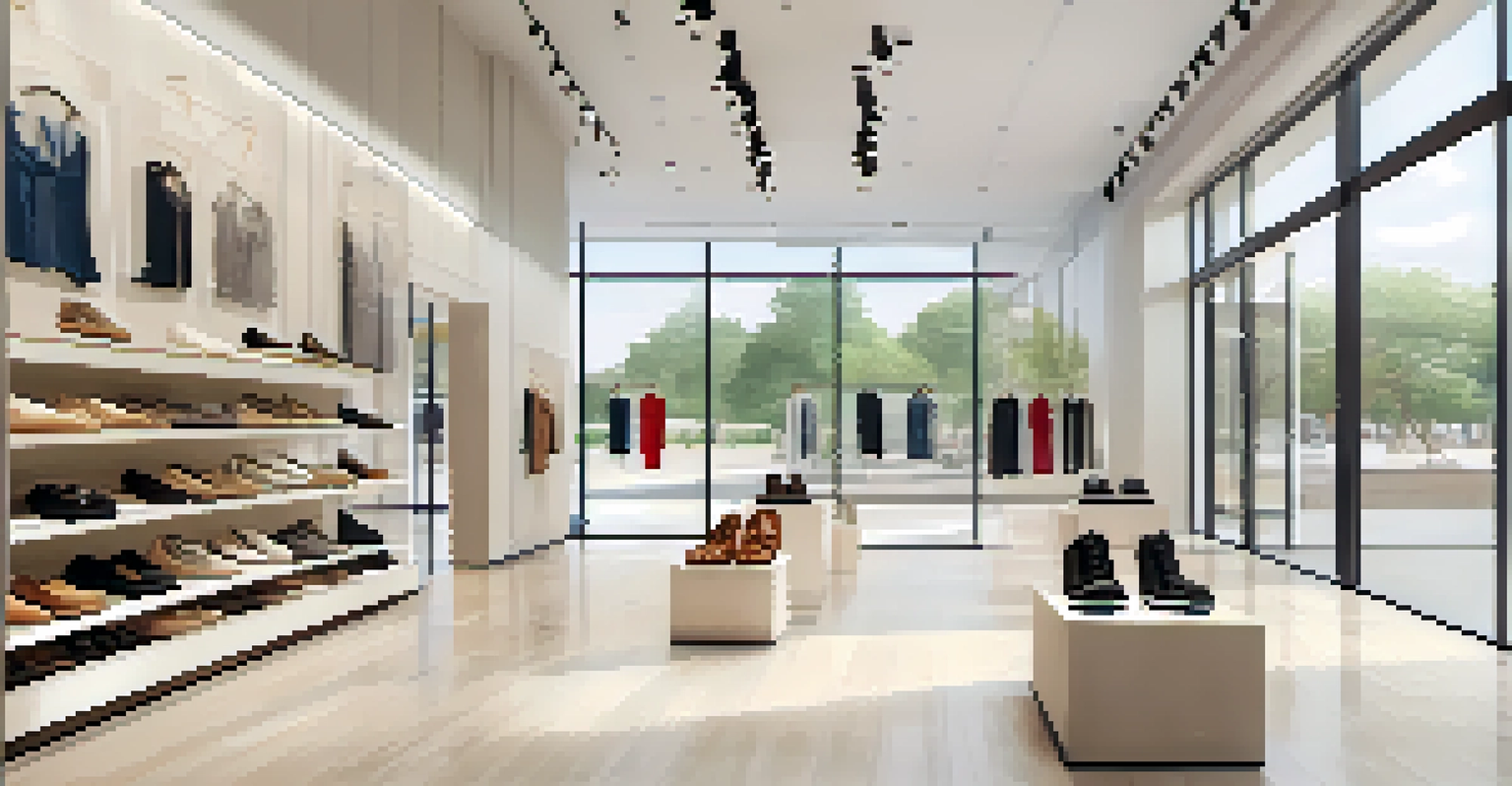Luxury Footwear Brands Embracing Sustainable Production Methods

The Rise of Sustainable Luxury Footwear Brands
In recent years, the luxury footwear market has witnessed a significant shift towards sustainability. Brands are recognizing that consumers today prioritize ethical production alongside quality and style. This change is not just a trend; it's a response to the growing demand for environmentally conscious products. Luxury footwear is now being crafted with an eye toward sustainability, blending elegance with eco-friendly practices.
Sustainability is no longer a luxury; it is the expectation.
The increasing awareness of environmental issues has prompted many luxury brands to rethink their production methods. Companies are now focusing on reducing their carbon footprint and utilizing sustainable materials. By adopting these practices, they not only appeal to conscientious consumers but also contribute positively to the planet.
Examples of brands leading this charge include Stella McCartney and Gucci, which have both made substantial commitments to sustainability. These brands are setting new standards in luxury by proving that high fashion can coexist with environmental responsibility.
Innovative Materials Redefining Luxury Footwear
One of the most exciting developments in sustainable luxury footwear is the use of innovative materials. Brands are now exploring alternatives to traditional leather, such as mushroom leather and recycled plastics. These materials not only reduce waste but also offer unique aesthetics that can enhance the overall design of the footwear.

For instance, the use of bio-based materials allows for more sustainable production processes without sacrificing comfort or style. Luxury brands are leveraging these innovative solutions to create shoes that are both environmentally friendly and chic. This shift not only reflects a commitment to sustainability but also a commitment to creativity.
Sustainability Drives Luxury Footwear
Luxury footwear brands are prioritizing sustainability, responding to consumer demand for ethical production and eco-friendly practices.
As consumers become increasingly aware of the environmental impact of their choices, the demand for these innovative materials is likely to grow. This change is reshaping the luxury footwear landscape, encouraging brands to think outside the box.
Ethical Manufacturing Practices in Luxury Footwear
Sustainable luxury footwear brands are also focusing on ethical manufacturing practices. This means ensuring fair labor conditions and transparent supply chains, which are crucial components of sustainability. Brands are investing in their workers and communities, promoting not just environmental health but social equity as well.
The future will be green, or not at all.
By prioritizing ethical manufacturing, these brands are building trust with their consumers. Customers want to know that their purchases contribute positively to the world, and transparent practices help foster that connection. Brands like Veja exemplify this dedication to ethical production, showcasing a commitment to both the planet and its people.
In a world where consumers are becoming more discerning, ethical practices are not just a nice-to-have; they are quickly becoming a necessity. This approach is helping to redefine what luxury means in the modern age.
The Role of Technology in Sustainable Footwear
Technology is playing a pivotal role in transforming the luxury footwear industry towards sustainability. From 3D printing to advanced recycling methods, tech innovations are streamlining production processes and minimizing waste. These advancements enable brands to create high-quality footwear with a lower environmental impact.
For example, some brands are utilizing 3D printing to produce customizable shoes, which reduces the amount of unsold inventory and waste. This level of personalization not only enhances customer satisfaction but also aligns with sustainable practices. By adopting these technologies, luxury footwear brands show that they are committed to innovation and environmental stewardship.
Innovative Materials Enhance Style
The use of alternative materials like mushroom leather and recycled plastics is redefining luxury footwear while promoting sustainability.
As technology continues to evolve, we can expect even more groundbreaking solutions that will further advance sustainability in luxury footwear. This forward-thinking approach can help brands stay ahead of the curve and appeal to eco-conscious consumers.
Consumer Demand for Sustainable Luxury Footwear
Consumer demand for sustainable luxury footwear is driving brands to rethink their strategies. Today’s shoppers are more informed and are seeking products that align with their values. This shift in consumer behavior has prompted luxury brands to prioritize sustainability as a key component of their offerings.
Many consumers are willing to pay a premium for footwear that is not only stylish but also eco-friendly. This willingness to invest in sustainable products demonstrates a growing recognition of the importance of responsible consumption. Brands that embrace this trend can cultivate loyalty among customers who value sustainability.
As the conversation around sustainability continues to evolve, brands that respond to this demand will likely thrive. This trend illustrates a powerful shift in the luxury market, where values and style go hand in hand.
Case Studies of Leading Sustainable Footwear Brands
Several luxury footwear brands have emerged as leaders in sustainable practices, setting examples for others to follow. For instance, Allbirds has gained popularity for its commitment to using natural materials and maintaining a transparent supply chain. Their shoes are not only comfortable but also eco-friendly, appealing to a clientele that prioritizes sustainability.
Another notable example is Rothy's, a brand that crafts stylish shoes from recycled plastic bottles. Their innovative approach to sustainability has garnered a loyal following, proving that luxury and environmental consciousness can coexist beautifully. These brands are not just making shoes; they are making a statement about the future of fashion.
Technology Fuels Sustainable Practices
Advancements in technology, such as 3D printing, are streamlining production and minimizing waste in the luxury footwear industry.
By showcasing these case studies, we can see how luxury footwear brands can embrace sustainability without compromising on quality or style. Their success stories inspire others to follow suit and contribute to a more sustainable fashion industry.
The Future of Luxury Footwear and Sustainability
Looking ahead, the future of luxury footwear is intrinsically linked to sustainability. As brands continue to innovate and adapt, we can expect to see even more eco-friendly options entering the market. The industry is on the brink of a transformation, where sustainability becomes a foundational pillar of luxury footwear.
Consumers will likely continue to demand greater transparency and accountability from brands, pushing them to adopt more sustainable practices. This evolution will not only benefit the environment but also enhance the brand's reputation and consumer loyalty. The commitment to sustainability is becoming a defining characteristic of luxury in the modern era.

In conclusion, as luxury footwear brands embrace sustainable production methods, they are paving the way for a greener future. With creativity, innovation, and ethical practices at the forefront, the industry is poised for a remarkable transformation.